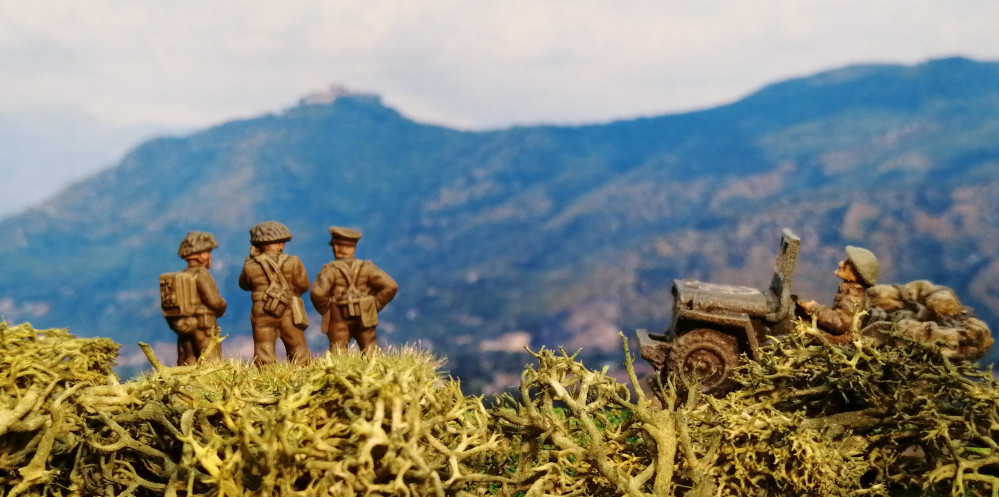
75th Anniversary of the Battle of Monte Cassino and Northern Italy (Gaming The Battles)
Anzio Landings
On the 22nd January, the US 5th Army launched Operation Shingle, the beach landings at Anzio. The landings were devised by Churchill and, like the whole invasion of Italy, the Americans were very pessimistic around the entire plan. Clark, in command of 5th Army, viewed the operation as a distraction from Cassino and had been advised by others that it was a death trap, especially if a break through at Cassino could not be achieved. Clark cancelled the plan. He was however overruled by Churchill who impressed on Clark the need to open a new route to Rome and draw defenders away from Cassino. Clark relented and assigned the Anzio landings to Lt General Lucas’ VI Corps with orders to advanced quickly and threaten the rear of German XIV Panzer Corps.
Lucas had to contend with limited availability of landing craft and a short planning horizon. The Allies were insistent on nothing delaying Operation Overlord and could only offer the landing craft until 5th February before they were needed elsewhere. To further compound the problem, there was only enough capacity to land 2 tank divisions. Clark and Lucas also felt that to ensure success, at least two Corps would be required and that just using a single Corps would lead to failure. Confidence in the US Command was low, even before the operation started.
Surprisingly, the initial landings by VI Corps were largely unopposed and by midnight on 22nd, 36,000 men and over 3000 vehicles had been put ashore. Allied forces had even advanced 3km inland while US Rangers had taken the port at Anzio. Over the next few days, VI Corps continued to build up their forces and, expecting a German counter attack, dug in around their beach head to protect the gains. This was against the expectations of the rest of the Allied commanders who were expecting Lucas to advance rapidly however given the resources at his disposal, Lucas also had a responsibility to not over extend and to protect the beach landing sites. Whether a more offensive approach would have worked is debatable and could have been costly. It is likely that Lucas’ pessimism around the whole operation was a significant factor in his decision to not go on the offensive.
Kesselring had drawn up plans to handle beach landings at most of the obvious locations and allocated some defenders to protect and delay landings at these sites. His main defence relied upon a mobile force that could deploy quickly once the landing location was known. Within two hours of being informed, Kesselring had mobilised his defending forces, sending 4th Fallschirmjager and the Hermann Goring Panzer Division to take up defensive positions around the beach head. He further requested additional reinforcements be sent from France and Yugoslavia to contain the Allies. By 25th January, three German Divisions had surrounded the Allied beach head and Von Macksensen’s 14th Army took overall command. Further divisions were on route to the Anzio area to add to the German presence. By 24th January, the 40,000 troops were in place around the Allied beach landings.
Troop build up continued over the next few days by both sides. By January 29th, the Allies had landed 69,000 men and over 200 tanks. The Germans had over 71,000 troops in place. On the North side of the landing zone were British 1st Division supported by 46th Royal Tank Regiment and 2nd Special Services Brigade. To the Northwest of 1st Division was a small US Ranger force made up of 4 Battalions from 6615th Rangers. The Southwestern force consisted of US 3rd Infantry Division and the US 504th Parachute Regiment.
Lucas launched a two pronged attack on January 30th. US 3rd Division was to strike in land toward Cisterna and to take the Alban hills overlooking the landing beaches. Meanwhile, British 1st Division was to drive northwards up the Via Anziate and capture Campoleone. Initially, 3rd Division made good progress, pushing almost 5km inland but eventually ground to a halt short of their target. They failed to link up with 1st and 3rd Ranger Battalions who had launched a daring raid inland but had become cut off and were facing fierce opposition from the Herman Goring Division. Of the 767 men in the two Battalions, only 6 returned to US lines with the rest either captured or killed.
British 1st Division faced stiff opposition as they tried to push up the Via Anziate. They gradually gained ground but fell short of Campoleone and were left in a long, thin salient stretching up the road.
German 14th Army continued to build up its troops and by early February had reached an estimated 100,000 in 2 Corps. With the Allied attacks contained and stalled, Von Mackensen ordered some small scale counter offensives on the 3rd February, particularly around the salient created by the British 1st Division. These attacks went well and, realising that the Allies were in a difficult position, Von Mackensen ordered a full scale offensive at 11pm that night. By the early hours of 4th February, the fragile British front line had fallen into a disorganised, incoherent mess and started to collapse. Individual companies found themselves isolated and cut off, not sure in which direction to withdraw.
By mid morning on the 4th, the tip of the salient, now almost 3km long but less than 1km wide, was being squeezed on all sides. 3rd Brigade found themselves surrounded and cut off North of the collapsing salient and Lucas ordered the newly arrived 168th Brigade to try to stabilise the situation. 3rd Brigade held on for most of the day, taking heavy losses while 168th Brigade fought their way to their positions. At 5pm, 3rd Brigade was ordered to make a fighting withdrawal under the cover of artillery. At that moment, 168th Brigade, with support from 46th Royal Tank Regiment, broke through and assisted in the extraction of the remaining elements.
For the next couple of days, both sides utilised artillery and bombing runs to disrupt the enemy and soften up the targets. In the case of the Germans, this proceeded a renewed offensive launched late in the evening of 7th February. Several British Battalions were almost surrounded by the offensive and escaped only through giving ground. The German offensive slowly pushed the British back and by 10th February, the salient ceased to be.









































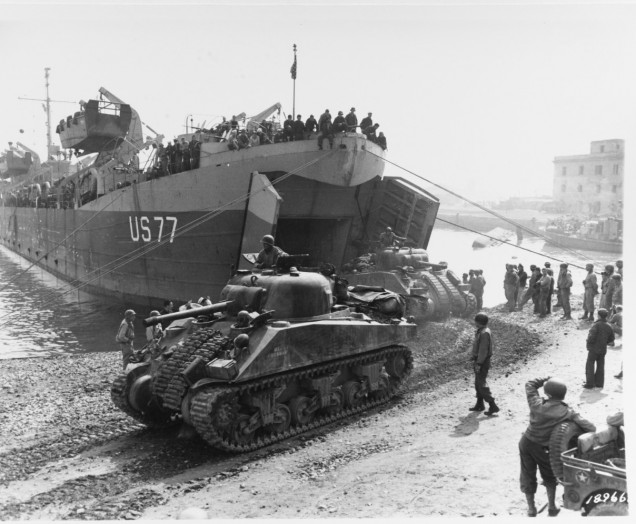
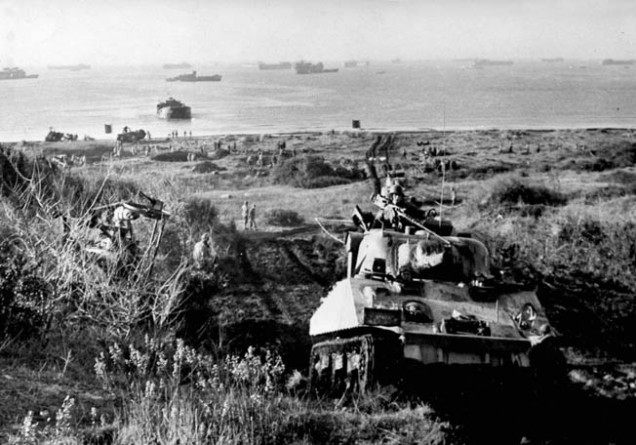
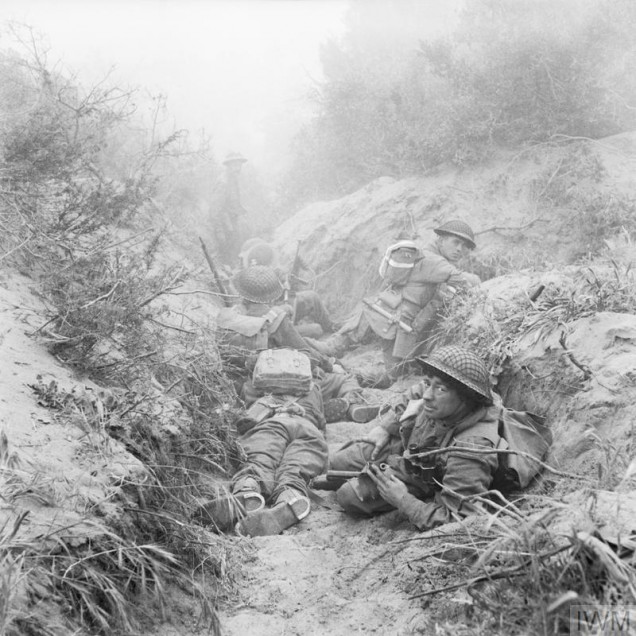
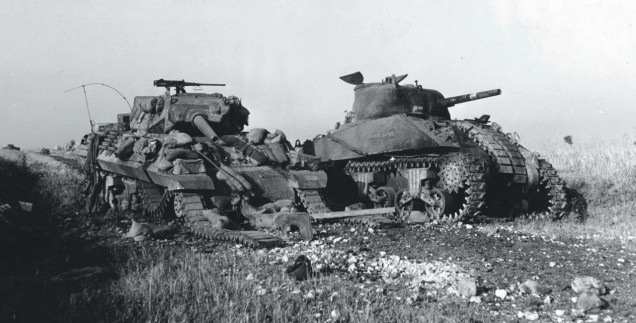

































Leave a Reply